- Author Matthew Elmers [email protected].
- Public 2023-12-16 21:49.
- Last modified 2025-01-24 09:17.
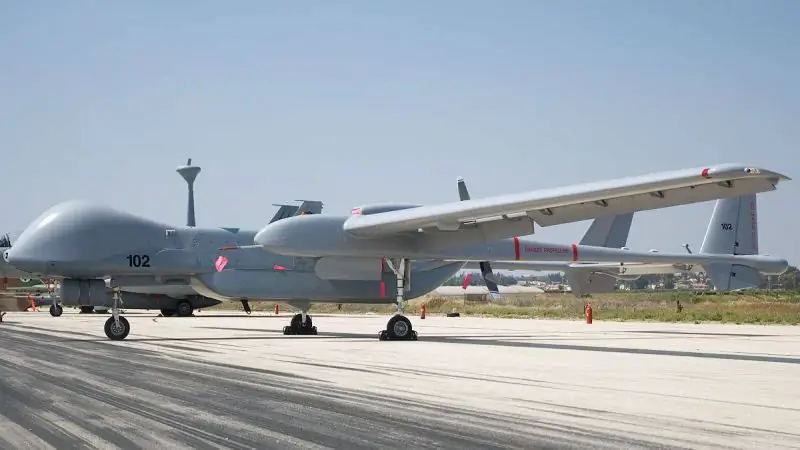
Heron-TP (Eitan) of the Israeli company IAI. The wingspan is 26 m, the maximum take-off weight is 4650 kg, the flight duration is 36 hours.
New concepts
Airborne laser weapons can be installed not only on manned sixth generation fighters, but also on medium-sized UAVs. The US Missile Defense Agency plans to spend $ 286 million in 2016-2020 to develop weapons technology that "will create the basis for a next-generation laser UAV system capable of tracking and ultimately destroying an enemy at a substantially lower cost than existing missile defense systems."
General Atomics has been laboratory testing a "third generation laser system" that will be capable of delivering ten 150 kW pulses between recharges, which will take just three minutes. The company is designing a 1360 kg container that will house the laser unit and which will go into the armament bay of its Avenger UAV. With funding from the Department of Defense, this container could be ready for testing on board an aircraft within two years. It should be noted that the United States Air Force Special Operations Command has shown interest in the concept of a laser installation on a standard pallet (pallet) that can be installed in a Lockheed Martin C-130 transport aircraft.
The US Army is exploring another direction for using the potential of UAVs, developing the concept of a combination of "manned and unmanned vehicles" Manned-Unmanned Teaming (Mum-T or simply Mut), in which pilots of Boeing AH-64 Apache and Bell OH-58D helicopters can control such UAVs such as MQ-1C Gray Eagle General Atomics, MQ-5B Hunter Northrop Grumman, RQ-7B Shadow Textron Systems, RQ-11B Raven and Puma AE from AeroVironment, determine their routes, control their sensors and see images from them.
This is achieved through gradually increasing levels of equipment functionality. For example, the AH-64D Block II has Level 2 equipment that allows you to receive video from a UAV in flight and control its sensors. The AH-64E Guardian (formerly AH-64D Block III) is Level 4, allowing the pilot to control the UAV's flight path.
Essentially, the Mut concept allows you to approach hostile targets without risking the controlling helicopter, while providing the helicopter crew with a high-quality real-time image of the target to be attacked. In the long term, due to the use of UAVs, the AH-64E helicopter will take over the tasks of the OH-58D armed reconnaissance helicopter.
In a kind of unique concept, the Gremlin program developed by the US Defense Advanced Research and Development Administration (Darpa), transport aircraft and bombers will serve as "aircraft carriers in the skies"launching from a safe distance many small universal UAVs that will fly in combat airspace and then return to the "mother plane". In late 2014, Darpa issued a request for information to demonstrate complete systems for four years. For 2016, FDA has requested an initial $ 8 million for the Gremlin program.
The Team-US (Technology for Enriching and Augmenting Manned-Unmanned Systems) program is another radical Darpa approach to future zone-blocking scenarios. Since the number of manned combat aircraft systems of the sixth generation will be severely limited, then, undoubtedly, the American fighters of the fourth and fifth generations will retain their importance. They will be able to send "flocks" of low-cost "slave drones" that will conduct surveillance, conduct electronic attacks and deliver ammunition to the target, for example, through the networked air defense systems. For Team-US, Darpa has requested $ 12 million for 2016.
The US Air Force Research Laboratory is also working on the concept of an "affordable, functional, but not too bad to lose" (English term "attritable") UAV launched from an aircraft with a final cost per unit no more than $ 3 million.
One of the foundations for the use of UAV flocks is the Darpa program under the designation Code (Collaborative Operation in Denied Environments). In accordance with it, one person will be able to control six or more UAVs equipped with a system of "general autonomy" to search and destroy targets.

In July 2010, the Zephyr Seven solar powered aircraft set an all-time flight record of 336 hours and 22 minutes.

The second US Air Force UAV MQ-4C Triton from Northrop Grumman (# 168458) made its maiden flight on October 15, 2014
MALE at sea
Another avant-garde idea, born in the bowels of Darpa, received the designation Tern. It uses concepts that will allow a Male-class UAV (medium-altitude, long-endurance) with reconnaissance and strike capabilities to operate (even in high seas) from forward-based American warships that do not have a take-off deck …
In May 2014, Darpa teamed up with the Office of Naval Research for the Tern Program (formerly TERN - Tactically Exploited Reconnaissance Node, a tactically used reconnaissance node), targeting a full-scale maritime flight demonstration from a ship with a deck the same size as that of an Arleigh Burke-class destroyer. … The US Navy is also interested in the operation of the Tern system from coastal combat ships Littoral Combat Ships (LCS), helicopter landing docks (LPD), landing dock ships (LSD) and cargo ships of the Naval Shipping Command.
In the finished form, the Tern UAV will be able to patrol within a radius of up to 925 km for more than 10 hours and deliver payload to a distance of up to 1,700 km, which (if implemented) will allow reaching 98% of the entire land area from the sea. It is assumed that the Tern UAV will be used for reconnaissance and surveillance and strike missions in the depths of land without the involvement of forward bases or the assistance of the operator country. Since visibility is not mentioned here, then, apparently, this concept provides for actions in regions with poorly developed military structures, unexpected attacks or jamming out of the range of enemy air defense systems.
Tern's core solutions relate to launch and return systems, but Darpa is also interested in compact deployment, deck manipulation robots, and automation of maintenance and pre-flight checks. The goal of the program is a demonstration flight of a prototype in 2017.
Darpa awarded Tern Phase 1 contracts to Aurora Flight Sciences, Carter Aviation Technologies, Maritime Applied Physics Corporation, Northrop Grumman and AeroVironment in September 2013 to submit a concept.
The annual contracts for Phase 2 of the Tern program were awarded by Darpa to Northrop Grumman and AeroVironment in October 2014. According to them, before the issuance of the contract for Stage 3, demonstration flights of a reduced model must be carried out.
Rumor has it that both contractors are using a vertical take-off and landing scheme, but Aurora received a contract from Darpa to develop its patented SideArm UAV launch and return system. Obviously, here the launch rail is used for launching, and for the return, the ring grabs the hook extending from the UAV body.
VTOL X-PLANE program
A discussion led by Darpa on advanced UAVs would be incomplete without mentioning the X-Plane vertical take-off and landing vehicle program ($ 130 million, 52 months), although it is aimed at technology that can equally be applied to manned vehicle.
The agency plans to develop a demonstration model that can achieve speeds of 550-750 km / h, hover efficiency of over 60%, aerodynamic quality factor in cruise flight of at least 10 and payload equal to at least 40% of its total weight 4500-5500 kg.
22-month contracts for Phase 1 of the X-Plane program were awarded in October 2013 to Aurora Flight Sciences, Boeing, Karem Aircraft and Sikorsky Aircraft (merged with Lockheed Martin Skunk Works). As for the project of the company Aurora, then apart from its name Lightning Strike, nothing else is known. Boeing's Phantom Swift project has two lifting propellers hidden in the fuselage and two pivoting propellers at the ends of the wings in the guide nozzles. The Sikorsky Rotor Blown Wing concept is a VTOL aircraft with a tail landing. The Karem project has rotary rotors in the middle of the wings, and the outer wings rotate with the rotors.
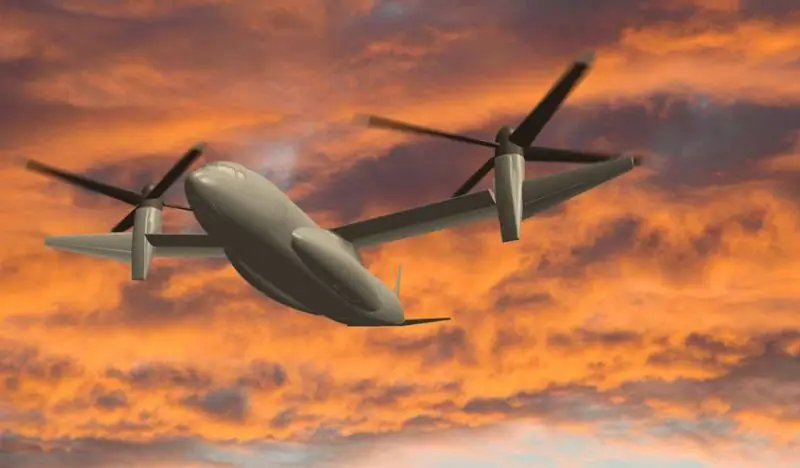
Karem Aircraft concept
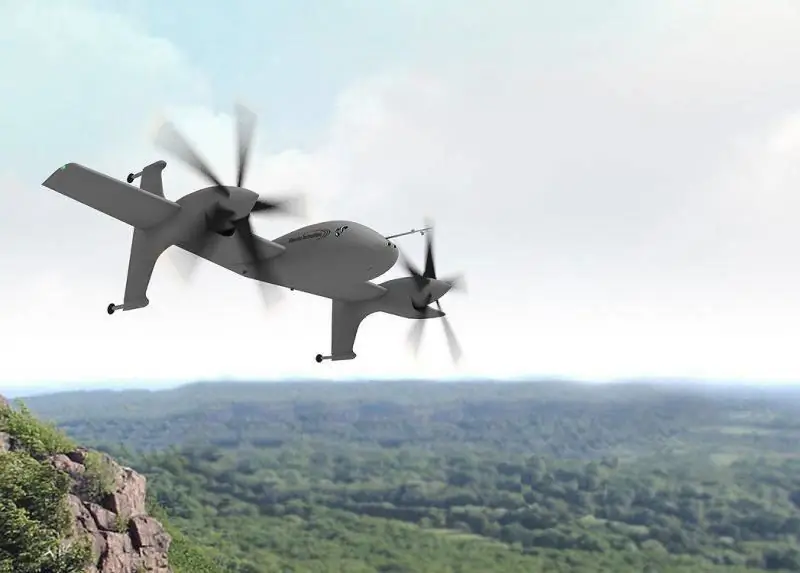
Sikorsky's Rotor Blown Wing Concept
The four applicants were due to submit preliminary designs in late 2015, after which Darpa will select one contractor to build the X-Plane technology demonstrator, which is due to take off in February 2018.
Constant surveillance
Security concerns in Afghanistan have led to the need for 24/7 aerial reconnaissance systems that are detailed enough to detect directional roadside bombs. There were various proposals for the use of lighter than air LTA (lighter-than-air) vehicles, but apart from tethered balloons, nothing went into service. The US Air Force project, called the Mav6 Blue Devil Two, was closed in June 2012, and the Lemv (Long-Endurance Multi-Intelligence Vehicle) project of the US Army and Northrop Grumman was halted in February 2013.
The Lemv project was to be based on the FLAV304 unmanned hybrid airship, developed by the British company Hybrid Air Vehicles (HAV). The first of three prototypes planned for this program took off in August 2012 from an air base in New Jersey. After the cancellation of the Lemv project, HAV bought back the prototype from the Pentagon for $ 301,000 on the condition that it would only work in manned mode.
The HAV304 is currently being used as a technology demonstrator, while the company is developing (with partial funding from the British government) a much larger manned airship, the Airlander 50, capable of carrying 50 tons of cargo over a range of 4,800 km. The first flight of the device is scheduled for 2018-2019. In the unmanned version, the serial version of the Airlander 10 (not yet marketed) of the HAV304 airship is estimated to have the same characteristics as envisaged for the Lemv project, that is, the flight duration is 21 days, the flight altitude with a load of 1150 kg is about 6000 meters.
Another high-tech lighter-than-air reconnaissance vehicle was developed by Raytheon. The Jlens airship consists of two unmanned tethered balloons installed at an altitude of 3000 meters for up to 30 days. The main equipment they carry consists of a surveillance radar and a tracking radar. Jlens can detect and track low-flying manned vehicles and cruise missiles at ranges of up to 550 km. It also has limited detection capabilities for short-range ballistic missiles.
Production plans for the Jlens were canceled, but two systems were manufactured. One of these was the subject of a three-year evaluation process for the US Army to examine how deeply it can integrate into the existing eastern sector of the Joint Air Defense Command of the North American continent Norad. The second system is in strategic reserve and, if necessary, is available for deployment anywhere in the world.
Hybrid airship design, use for helium filling, advanced shell materials, aerodynamic lift depending on the shape of the hull, and finally rotary thrust engines offer extremely long flight capabilities along with a simpler ground preparation process compared to traditional airships. Like short take-off aircraft, they do not rely on traditional runways, although they require a free flat area of about 300 meters in length.
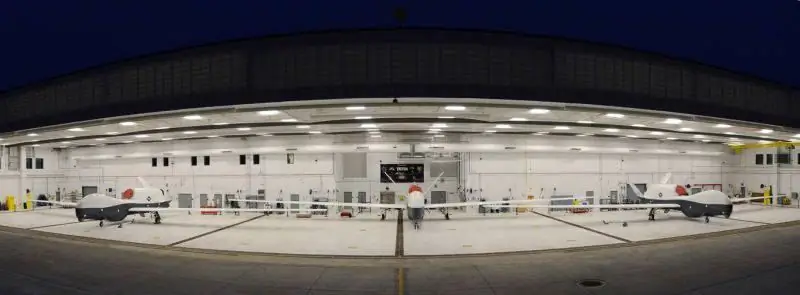
Northrop Grumman's third MQ-4C Triton made its maiden flight in November 2014. Three experimental vehicles are demonstrated at one site at the Center for Combat Use of Naval Aviation
Fixed-wing craft
However, advances in relatively traditional fixed-wing aircraft have resulted in flight times measured in days. Thus, they are guaranteed to continue to play an important role in operations with extreme flight duration.
In 2007, Aurora Flight Sciences was selected by the Air Force Research Laboratory to conduct an ultra-long flight study and determine if the fixed-wing design could offer an alternative to lighter-than-air concepts. The result was a single-engine Orion drone weighing 3175 kg, operating on hydrogen and designed to cruise at an altitude of 20,000 meters for more than a day with a load of 180 kg. The Orion program is run by the Air Force Laboratory, and the project is funded primarily by the US Army's Rocket and Space Command.
As a result of further progress of the Orion project, a Male category apparatus with a mass of 5080 kg with a twin Austro diesel engine and a wingspan of 40.2 meters appeared. The Orion is currently capable of cruising for 120 hours with a load of 450 kg, but at an altitude of 6,000 meters, which naturally reduces the field of view.

Orion UAV prototype
In December 2014, a 450 kg Orion prototype flew 80 hours and landed at China Lake, California with 770 kg of fuel remaining. The flight, which took place at altitudes of up to 3000 meters, was terminated ahead of schedule due to the achievement of the planned flight range.
The Orion is estimated to be airborne for 114 hours (4.75 days) within a range of 800 km, but with a range of 4800 km, the flight duration is reduced to 51 hours. It can be configured to carry a 450kg load under each wing, allowing for shock capabilities. The ferry flight range is 24,000 km. The cruising speed is 125-160 km / h and the afterburner speed is 220 km / h. The Orion could be an economically viable replacement for the unarmed Predator UAV.
The cherished goal of the two American hydrogen-fueled projects is to extend flight times at altitudes up to 20,000 meters. This is the height that would provide a realistic optimum of coverage for a wing lift vehicle.
Boeing's 4,450 kg scaled-down Phantom Eye demo has a 45.7 meter wingspan and two 2.2-liter, 112 kW turbocharged Ford engines that run on liquid hydrogen pumped into two 2.44 meter diameter spherical tanks. The device must remain in the air for 4 days at an altitude of up to 20,000 meters with a load of 240 kg.
The Phantom Eye Demonstrator made its maiden flight in June 2012, sustained some damage during landing and resumed flight tests in February 2013. In June 2013, Boeing received a $ 6.8 million contract from the Anti-Ballistic Missile Agency to install an undisclosed type and composition of equipment on a demonstration sample. The next flight took place at an altitude of 8500 meters and lasted up to five hours. Boeing continues testing to increase flight duration and reach an altitude of at least 20,000 meters.
If successful, this demonstration program could continue with the construction of a full-size Phantom Eye with a wingspan of 64 meters, it can stay aloft for up to 10 days with a load of 450 kg. It is stated that four such devices will be able to provide a continuous radio communication zone.
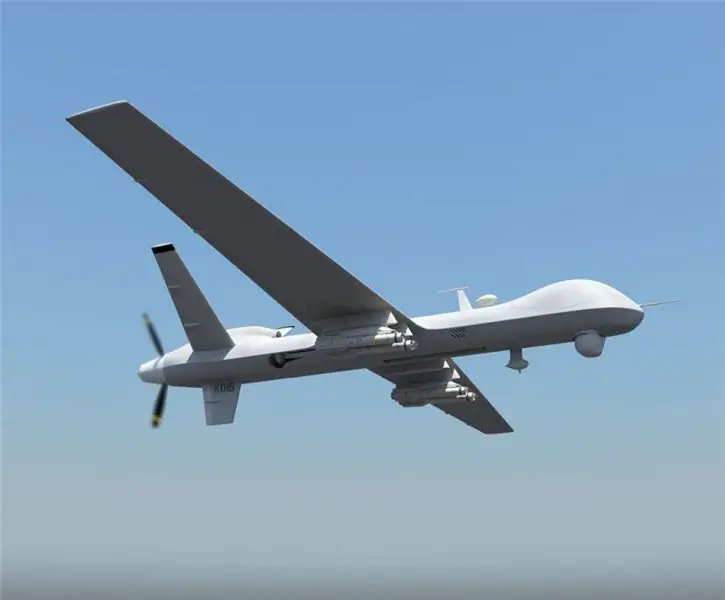
The MQ-9B Reaper UAV with turboprop engines from General Atomics has proven itself well in a striking role. This experimental UAV is armed with four MBDA Brimstone air-to-ground missiles.

Piaggio Aero's P.1HH Hammerhead is an unmanned version of the P. 180 business jet.
In the same class as the small-scale Phantom Eye demo is the AeroVironment Global Observer GO-1, which has a 40-meter wingspan and one hydrogen-powered engine. However, in this UAV, the engine feeds an electric generator, which supplies energy to 4 electric motors, which in turn rotate the propellers mounted on the wing edge. As planned by the developer, GO-1 should remain in the air for up to five days at an altitude of 20,000 meters with a payload of 170 kg.
The GO-1 project, funded by six US government agencies, made its first flight in January 2011, but crashed three months later at the 19th hour of its ninth flight. In December 2012, the Pentagon stopped funding the project. However, AeroVironment completed the second prototype and in February 2014, together with Lockheed Martin, entered the international market with a Global Observer UAV, defining it as an atmospheric satellite system.

AeroVironment's Global Observer GO-1
Fixed-wing aircraft with hydrogen piston engines ultimately hold good promise for extreme flight times at high altitudes, but solar-powered aircraft are holding records for flight duration and steady-state altitude among UAVs.
UAV Zephyr Seven, developed by the British company Qinetiq, in July 2010 set an official record for flight duration for manned / unmanned aircraft, 336 hours and 22 minutes. It also set a record among UAVs for a steady-state altitude of 70,740 feet (21,575 meters).
Zephyr Seven has a wingspan of 22.5 meters, a take-off weight of 53 kg, and a payload of 10 kg. It flies at a cruising speed of 55 km / h and an afterburner of 100 km / h. The project has now been purchased by Airbus Defense 8c Space; another larger Zephyr Eight is planned, advertised as a “high altitude pseudo-satellite”.
In late 2013, the South Korean Defense Acquisition Program Administration (Dapa) announced plans to develop an ultralight solar-powered UAV by 2017 that would perform tasks such as a communications relay. The UAV must remain on alert in the air for three days at an altitude of 10-50 km. The $ 42.5 million budget for this program consists of contributions from various government ministries.
Meanwhile, US Darpa has shown interest in developing an unmanned aircraft that could monitor military and commercial activity north of the Arctic Circle for more than 30 days, tracking air, ground and underwater targets. Although, year-round operation of a solar-powered UAV at such high latitudes would be difficult.
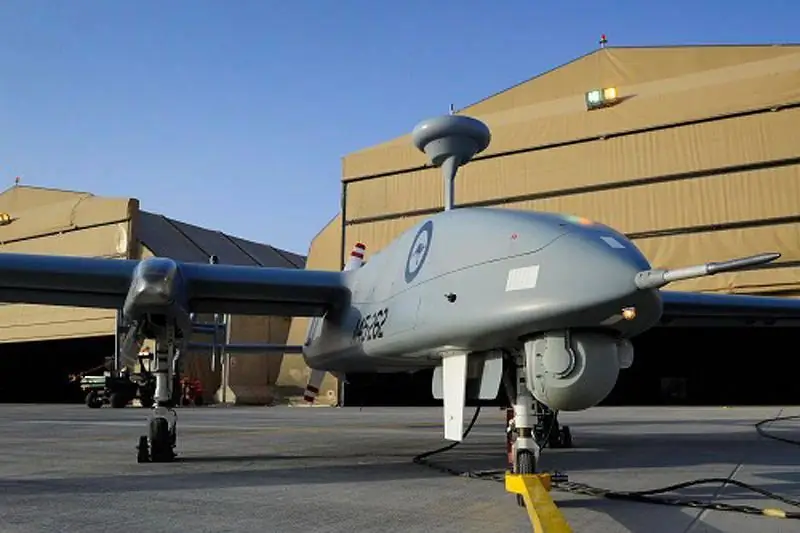
The Australian Air Force leased IAI Heron UAVs in 2009, one of which (serial number A45-262) was sent to Kandahar (pictured). Its lease has been extended until December 2017 for the purpose of training pilots in Australia.
Category HALE
The leader among the operated UAVs of the Hale category (high altitude, long endurance - high-altitude with a long flight duration) remains the Northrop Grumman Q-4 drone. It started as Project Darpa, but was put into service after the 2001 terrorist attacks in the United States. The main operator of the Global Hawk drone is the United States Air Force, which has a fleet of four EQ-4B UAVs (modified Block 20), 18 RQ-4B Block 30 UAVs with three more to be deployed by 2017, and 11 UAVs in the Block 40 variant.
The EQ-4B has a Bacn (Battlefield Airborne Communications Node) and is paired with four manned Bombardier E-11A (Global Express) aircraft to provide communications relay functions. The RQ-4B Block 30 is a multitasking intelligence platform equipped with Raytheon Eiss (Enhanced Integrated Sensor Suite) and Asip (Airborne Signals Intelligence Payload) sensor kits from Northrop Grumman. Its operational readiness was officially announced in August 2011.
The RQ-4B Block 40 UAV has a Northrop Grumman / Raytheon ZPY-2 active phased array radar on board, which provides selection of ground moving targets. The initial readiness was announced in 2013, and the initial date of entry into service was scheduled for the end of 2015. In 2014, the Block 40 apparatus from the 348th Reconnaissance Squadron in Server Dakota remained in the air for 34.3 hours; it is the longest non-refueling flight ever flown by the US Air Force.
The U. S. Air Force also operates 33 Lockheed U-2 manned reconnaissance vehicles for similar high-altitude reconnaissance missions. In recent years, the Pentagon has tried to focus on one standard type, proposing, first, to close the Global Hawk Block 30 project in 2013, and then (contrary to Congress) write off all U-2s in 2015.
If we compare the manned U-2 weighing 18,000 kg with the RQ-4B drone weighing 14,628 kg, then the U-2 is, in fact, more efficient, since it carries a very functional load with a mass of 2270 kg (compare with the mass of 1,460 kg for the Global Hawk UAV). In addition, compared to the RQ-4B's altitude limit (approximately 16,500 meters), the U-2 can fly much higher, at altitudes over 21 km. The gain here is obvious, since the range of the sensors to the horizon is roughly proportional to the height.
The U-2 is also much easier to deploy overseas and has a self-defense kit and an anti-icing system. The U-2 aircraft has a lower accident rate; Over the past ten years, the average rate of Class A incidents per 100,000 flight hours was 1.27, compared with a coefficient of 1.93 for the RQ-4B UAV.
The main advantage of the Global Hawk is that its flight duration is almost three times that of the U-2, which is limited to 12 hours (because of the pilot, of course). In addition, if the Global Hawk drone was shot down over enemy territory, there would be no "show" of Gary Powers in front of the cameras.
The 2016 Defense Budget Request provides funding for the U-2 for at least three more years (2016-2018), allowing it to remain in the US Air Force until 2019. Meanwhile, the Global Hawk drone sensor kit will receive a $ 1.8 billion upgrade aimed at reaching parity with U-2 reconnaissance aircraft. As stated earlier, only comparable items designed for the same purpose can be compared.
Lockheed Martin is currently offering the optionally manned U-2. They say they will remodel and deliver three U-2 aircraft and two ground control stations for some $ 700 million.
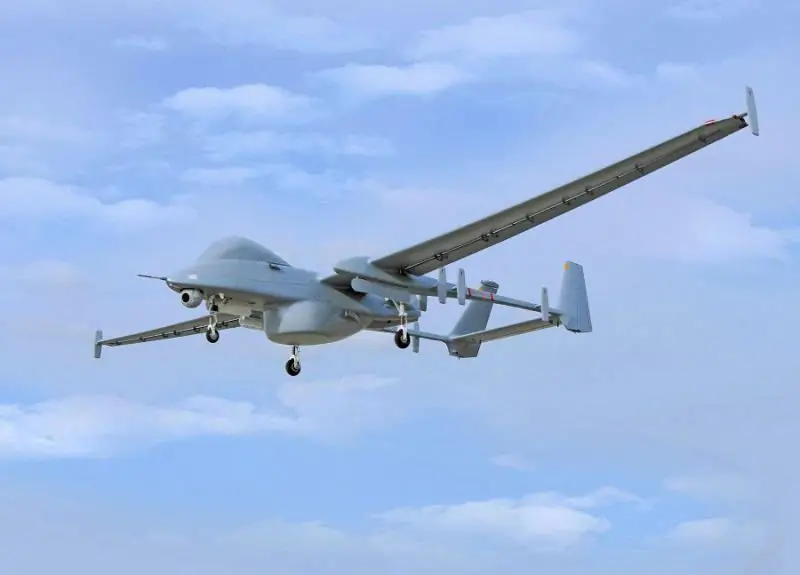
UAV Heron from IAI is equipped with satellite communications and electronic reconnaissance equipment, an optoelectronic station and a marine surveillance radar

Super Heron HF (Heavy Fuel) is powered by a Dieseljet Fiat diesel engine and has a 45 hour flight time
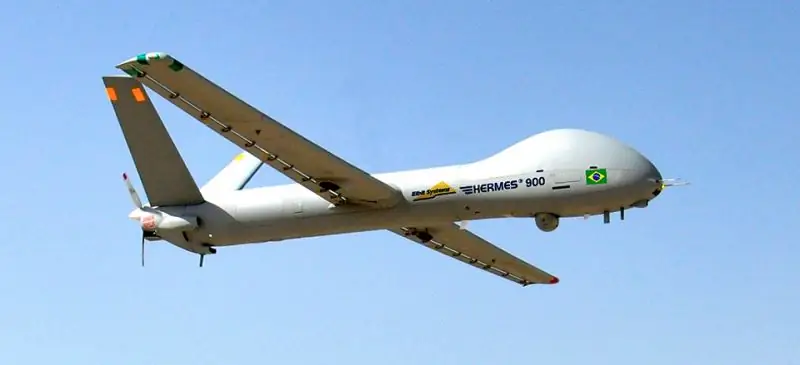
A contender to repeat Heron's success, Elbit Systems' Hermes 900 drone has already won several impressive victories, including picks from Switzerland and Brazil (pictured)
The first export order for the RQ-4 series drones was an order for four RQ-4E Euro Hawk electronic reconnaissance UAVs for Germany, based on the Block 20. They are to replace five Breguet Atlantic ATL-1 of the German fleet, which were decommissioned in 2010. A full-scale demo was shipped to Germany in July 2011; it was equipped with Eads-developed communications and electronic reconnaissance equipment installed in two underwing gondolas. However, the Euro Hawk program was closed in May 2013 due to problems with the certification of UAVs for operation in the airspace of Central Europe.
Later, in January 2015, the UAV contractor Euro Hawk received funds to deactivate and begin maintenance work on a demonstration model in order to complete tests of sensor equipment (possibly at the Italian Sigonella airbase, where the US Air Force Global Hawk drones are already serving). Its tests can be carried out on another platform, for example, on the US Navy's MQ-4C UAV or a high-altitude manned business jet.
The NATO Alliance Ground Surveillance (AGS) organization plans to acquire five RQ-4B Block 40 drones, which will be based from the outset at Sigonella airbase. UAVs for AGS must be certified by Italy, and their deliveries should be completed by mid-2017.
South Korea buys four RQ-4B Block 30 drones through a program to sell weapons and military equipment to foreign countries in a deal worth $ 815 million. These UAVs will mainly carry out surveillance patrols over North Korea in order to warn of missile attacks. In December 2014, Northrop Grumman was awarded a $ 657 million contract to supply the Korean Army with four drones and two ground control stations. The first should be delivered in 2018, and the last one by June 2019.
In November 2014, the Japanese Ministry of Defense announced the selection of the Global Hawk UAV to enhance its surveillance capabilities due to differences with China and concerns over North Korean missile development. The deal is expected to be completed shortly and three RQ-4B drones will arrive at Japan's Misawa Air Base in 2019.
The US Navy's MQ-4C Triton UAV differs from the RQ-4B mainly in equipment, but the wings and rudders have been modified to avoid vibrations at relatively high speeds, used when descending to low altitudes to study the ground situation. The leading edges of the fenders are reinforced to withstand blows from birds, and an anti-icing system and a lightning protection system are installed.
Triton drone equipment includes Northrop Grumman ZPY-3 MFAS (Multi-Function Active Sensor) radar, Raytheon MTS-B / DAS-1 optoelectronic station, TCAS (Traffic Collision Avoidance System), ADS-B (Automatic Dependent Surveillance - Broadcast), SNC ZLQ-1 electronic support and AIS (Automatic Identification System) receiving messages from surface vessels.
The installation of the "Due Regard Radar" forward-looking radar to identify other aircraft was moved to a later stage of development. Improvements will also affect the electronic reconnaissance kit and relay equipment.
The flight tests, in which the Triton UAVs were being prepared, included tests of five RQ-4A Block 10 drones. They are followed by three MQ-4C Lot One prototypes and (according to current plans) 65 serial Triton UAVs. The first prototype MQ-4C (# 168457) took off in May 2013, and the second in October 2014. In connection with the reduction in the allocated funds, Northrop Grumman itself financed the third experimental device (took off in November 2014), and in addition, it is planned to reduce the total number of production vehicles.
The US Navy plans to announce the arrival of the fourth and fifth MQ-4C prototypes in service at the end of 2017 and the arrival of four production drones in 2018. The first squadron of the Triton UAV under the designation VUP-19 is organized at the naval aviation base in Florida, as well as at the base in California. The second squadron, VUP-11, will be deployed at an air base in Washington state. In addition, it is planned to deploy drones at bases in California, Guam, Sicily, Okinawa and an unnamed air base in Southeast Asia.
In May 2013, the Australian government confirmed the choice of the MQ-4C UAV to meet its maritime and ground surveillance needs, as well as information on negotiations for the purchase of up to seven devices, which will work in combination with 12 manned Boeing P-8A aircraft. The Indian Navy has also shown interest in purchasing eight Triton UAVs. Canada and Spain are also being considered as potential buyers.
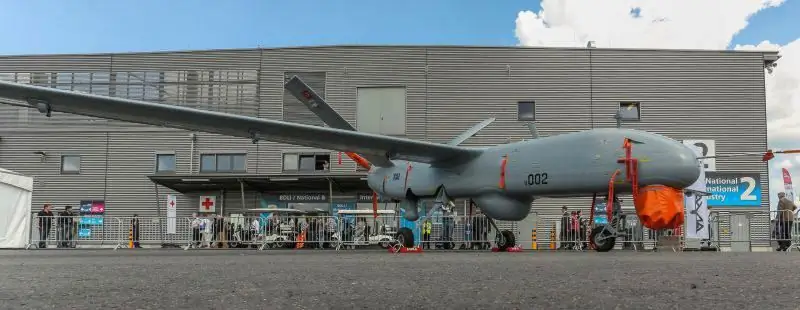
Turkey unveiled its Anka drone in the Block A variant at the Berlin air show in 2014 to show that the more functional Block B variant will correct the shortcomings of the previous model in terms of capabilities and technical characteristics.
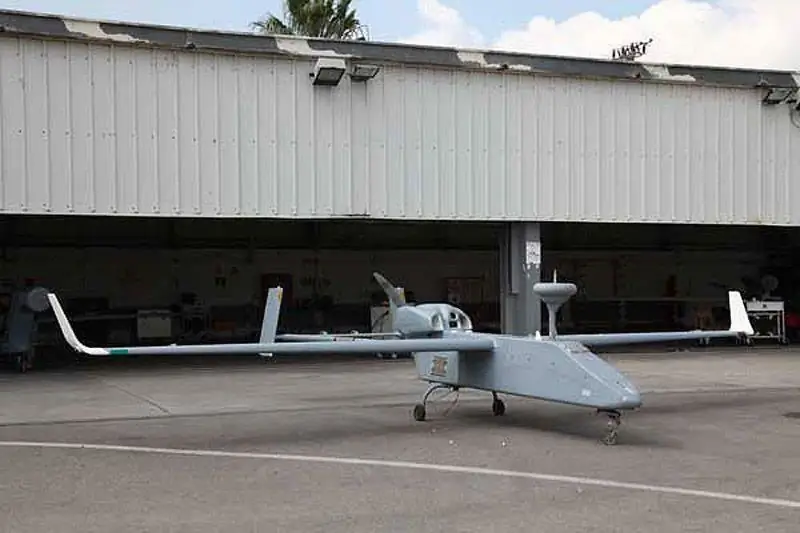
In its third version, IAI's UAV Searcher achieved a flight duration of 18 hours instead of 16, maximum take-off weight increased from 428 kg to 450 kg and a working ceiling from 5800 meters to 7100 meters. It is equipped with a quieter four-stroke engine with four horizontally arranged cylinders, and in order to reduce aerodynamic drag, the wings received end flaps.
Category Group V
The Northrop Grumman family described above falls into the category that the Pentagon defines as Group V UAVs, that is, weighing over 600 kg and altitudes over 5500 meters.
This group has its notable systems, for example, the General Atomics MQ-9 Reaper turboprop drone (the manufacturer still calls it Predator-B) weighing 4,762 kg. The US Air Force plans to buy 343 MQ-9 drones, the first of which will be in 2019. The current production version of the MQ-9 with the Block 5 suffix has an increased maximum take-off weight, a hardened landing gear, encrypted data transmission channels, high-definition video and an automatic landing system. Production of the Block 5 variant was launched as part of an Air Force order for 24 vehicles received in October 2013. Italy should equip its Reaper drones with Rafael Reccelite stations and Selex Seaspray 7500E radars.
The Predator-B ER UAV weighing 5310 kg has a reinforced chassis, injection of a water-alcohol mixture to improve takeoff performance and two external fuel tanks, which increase the duration of reconnaissance and surveillance missions from 27 to 34 hours. Its prototype took off for the first time in February 2014. This variant went into production in February 2014 under a US Air Force contract to upgrade 38 of its MQ-9 drones to ER standard by mid-2016. As an option, wings with a span of 24 meters (now 20 meters) are being developed, which will further increase the flight duration to 42 hours.
The main rival of the Reaper in the international market is the Heron TP (Eitan) drone (weight 4650 kg) of the Israeli company IAI, which first took off in 2006 and was first used in 2009 by the Israeli Air Force to attack a transport convoy carrying Iranian weapons through Sudan. Israel reportedly has a small number of Heron TP UAVs, and they are only used for long-range missions, such as overflying Iran. The purchase option was considered by France and Germany, but as far as is known, this deal has yet to be signed.
The newest joint project in this group is the Piaggio Aero P.1HH Hammerhead drone weighing 6145. This is a joint development of the Piaggio P.180 Avanti turboprop business aviation aircraft with Selex ES. The obvious goal of the project was to develop an optionally piloted aircraft, but it was decided to focus only on a pure UAV. The Hammerhead differs from the manned version of Avanti by the increased wingspan from 14 to 15.6 meters. This drone first took off in November 2013. At Idex 2015, it was announced that the Italian Air Force will purchase six Hammerhead UAVs and three ground control stations.
The Indian Defense Research and Development Organization (DRDO) is working on a series of Rustom UAVs with a long flight duration, which, ultimately, should replace the Israeli Heron UAVs in all branches of the military. In the latest news, it was reported that DRDO is offering to finance 80% of the development cost of Rustom-2, while the Indian industry will finance the remainder.
Publicly available sources report that the Rustom-2 will have two Russian 36MT engines of 74 kW each from the Russian NPO Saturn. The 36MT is a 450 kgf thrust bypass turbojet engine designed as a cruise missile propulsion engine. This suggests that the Rustom-2 could weigh about 4,100 kg, half of the 8,255 kg of the American General Atomics' Avenger UAV.
In May 2014, Airbus Defense & Space, Dassault Aviation and Alenia Aermacchi jointly proposed the MALE 2020 project for a Male UAV that could enter service by 2020 in order to preserve its core capabilities (and restrict MQ-9 purchases). In June 2015, at an air show in Paris, representatives from France, Germany and Italy signed an agreement to fund the initial research, which will result in the signing of a development contract in December 2015.






